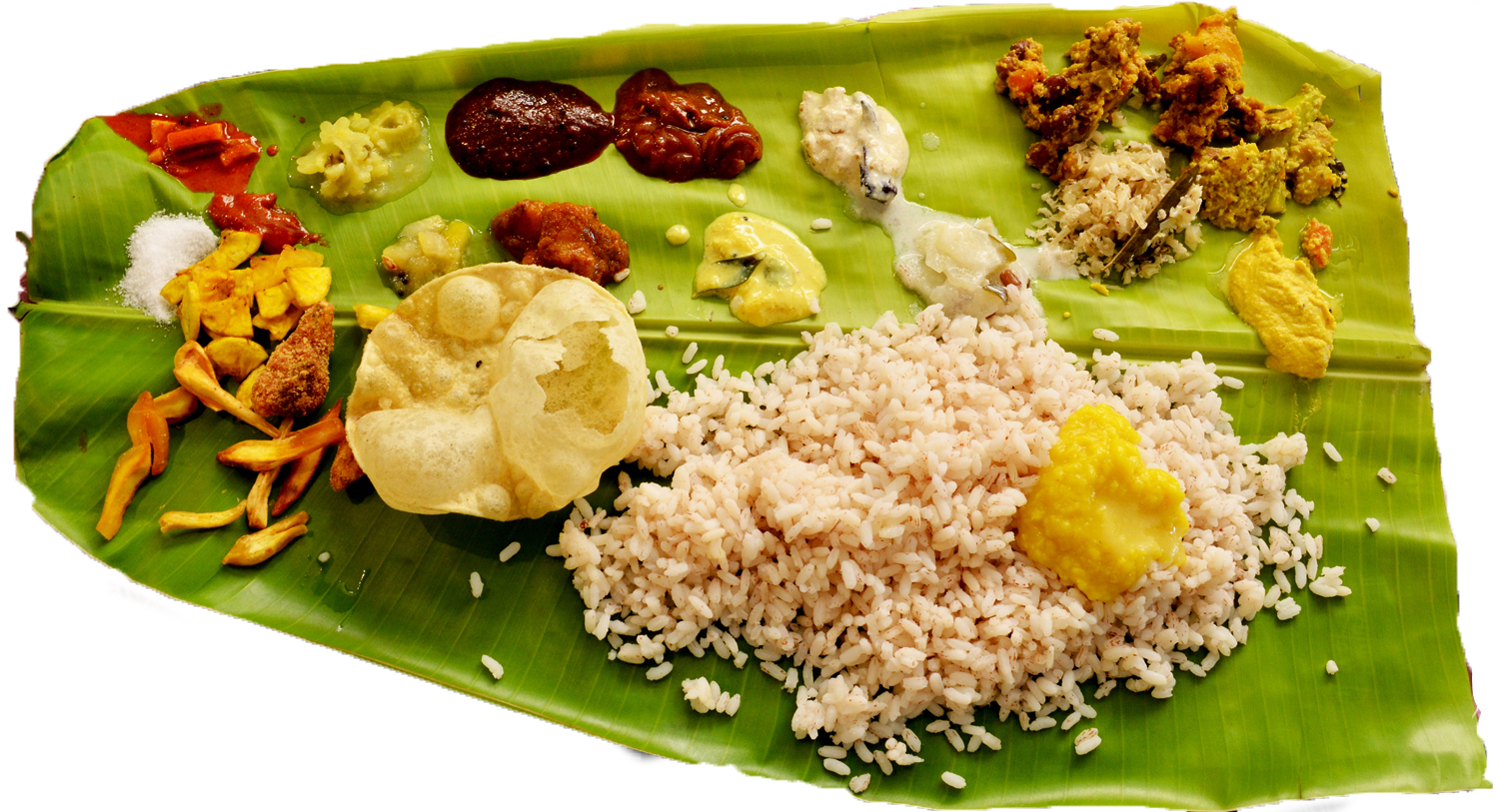Kerala
The traditional Kerala cuisine is simple and primarily made of vegetables and fruits that are abundant in the state. Most of the food items are prepared based on the knowledge of Ayurveda with generous use of spices such as dry ginger, pepper and curry leaves that are good for digestion. Sadya is a vegetarian meal or a feast with an array of food items that add color to the feast. Usually served on a banana leaf, Sadya is had as a lavish lunch for weddings, birthdays and other festivals, especially Onam. What makes sadya different from other meals is that it is purely organic. All the food items are made of vegetables that are easily grown and available in Kerala. The principal item of Sadya is rice which is a special variety called Kerala rose matta rice. It is served with other curries and preparations that are rich in taste. The number of items in a Sadya can range up to twenty-five to thirty items. These varied dishes can be divided into five categories:
- Curries:
- Parippu: A liquid curry made of moong dal or tuwar dal
- Sambar: Sambar is one of the most popular liquid lentil dishes in South India. It is highly nutritious and is a combination of local vegetables. It has tamarind, coriander leaves, onions and chillies and is best had with rice.
- Rasam: Rasam is a tangy broth, mildly spiced with pepper, chillies and other spices. It is usually consumed at the end of the meal as it helps in digestion.
- Accompanying dishes:
- Aviyal: One of the most important dishes of Sadya is Avial. It is a combination of different vegetables such as pumpkin, drumstick, raw bananas, beans and grated coconut. It also has turmeric powder, yoghurt and green chillies.
- Erisseri: It is made of raw banana, yams or pumpkin and roasted coconut.
- Kalan: A combination of yam, raw banana, buttermilk and ground coconut.
- Olan: Made of coconut milk, pumpkins and red grams.
- Thoran: It is dry dish which can be made either of beans or cabbage along with grated coconut.
- Koottukari: It is a special dish made of lentils, local vegetables, ground and roasted coconut.
- Pachaddi: Simple yoghurt and coconut-based dish made of any one vegetable either cucumber, raw mango, beetroot or pineapple.
- Chips and Pappadams:
- Pappadam: It is made of gram flour and is crispy in nature.
- Upperi: Upperis are deep-fried items that can range from two to three types. Two of them that are served are banana chips and jaggery coated banana chips.
- Pickles:
- Pickles:Mango pickle, lime pickle and pulli inji (form of a chutney made of tamarind, jaggery and spices)
- Payasam and Pradhaman (dessert):
- Palada Payasam: Palada payasam is dessert made of milk and sugar. Ada is the main ingredient which is tiny square shaped rice flakes specially prepared for the payasam.
- Ada Prathaman: In this ada remains to be the chief ingredient but this is prepared using jaggery and coconut milk.
It is believed that Sadya’s origin can be traced back to the reign of Maharaja Martanda Varma of the 18th century. He had once assembled a lavish meal for the Brahmin priests who had been reciting the Vedas for almost ninety days as a penance for all those people who had lost lives in a war.
There are certain rules and etiquette that need to be followed while having Sadya. The position of the leaf and the rest of the food items are predetermined and need to be placed in a specific order.
The banana leaf is usually placed on the floor with the curved end of the leaf facing the east. In some regions of Kerala, at least seven items are served before people take their spots on the floor to eat. It is served in a manner that pickles and the banana are placed on the left end of the leaf while on the top right end are placed avial, followed by thoran, kootucurry, errisseri, olan, and pachhadi.
 Government of India
Government of India



